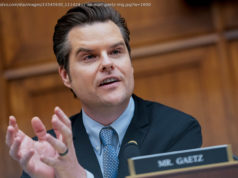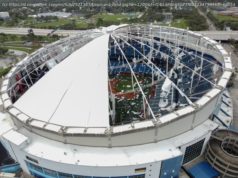Sometimes moderation isn’t just the mushy middle between two extremes; it’s a form of pragmatic and even revolutionary imagination. Nuclear power as an answer to climate changes qualifies in this regard.
I can’t believe I did this, but last Monday I actually chose to attend a conference on moderation. Yes, moderation. In what might seem like self-parody or a fevered dream, it started with a speech by David Brooks and ended with a discussion with Tony Blair. Held by the Niskanen Center, a think tank founded in 2014 dedicated to saving what’s left of liberal democracy, it was not designed, like CPAC now is, as some kind of madcap, post-everything entertainment — and in this respect, it certainly delivered.
At first blush, this seems utterly banal — always attempting to meet in the middle of two competing forces. Call it “both sides-ism,” “zombie centrism,” or whatever. I share the general contempt for that kind of “splitting the difference” moderation. There may be times when it works, in an attempt to close a political deal, but it’s mindless if it doesn’t take into account external reality. So to return to the metaphor of a boat, it’s no good being equally balanced if a gale-force wind is pushing the boat in one direction. You may need to get everyone on one side of the ship to keep it upright. You trim your sails not according to ideology, or a compass, but according to the winds and the waves. There’s no easy formula for this; it requires prudential judgment. It requires leaders who have a sense of the exigencies and passions of their time and respond to them empirically.
So FDR was in many ways an extremist in the context of American history; but his extremism was a form of moderation given the dire economic crisis he had to handle. I’d say the same thing about Thatcher: a radical remaker of an economy and society, but in the context of previous economic stagnation, social breakdown, and a stifling collectivism, something of a moderate.
What would that kind of revolutionary moderation look like today? That depends on your take on the world we are living in. My own view is that this period is unique in human history because it is the first time our species is on the verge of wiping out most life as it now exists on this planet. It’s the mother of all emergencies. In this context, moderation is radicalism. Splitting the difference right now between the GOP and the Democrats on this subject is to guarantee eco-suicide. And since it is an emergency, gradualism is not, shall we say, optimal. That’s why the Green New Deal has appeal. Its vast ambition is actually well-suited to the humongous scale of the challenge. When AOC’s critics say her idea is preposterously expensive and unnecessarily socialist (as it is), she is perfectly right to ask: So what’s your alternative?
Here’s a suggestion: Focus on a non-carbon energy source that is already proven to be technologically feasible, can be quickly scaled up, and can potentially meet all our energy demands. What we need, given how little time we have, is a massive nuclear energy program. Sure, we can keep innovating and investing in renewables, and use as much as we can. But they are not going to save us or the planet in time. We know nuclear works and does so quickly. As argued in Scientific American:
The speediest drop in greenhouse gas pollution on record occurred in France in the 1970s and ‘80s, when that country transitioned from burning fossil fuels to nuclear fission for electricity, lowering its greenhouse emissions by roughly 2 percent per year. The world needs to drop its global warming pollution by 6 percent annually to avoid “dangerous” climate change in the estimation of [respected climate scientist James] Hansen and his co-authors in a recent paper in PLoS One.
What’s the catch? It’s superexpensive. While the price of renewables keeps falling, nuclear remains very costly. The plants take a long time to build, and they’re difficult to site. One estimate is that it would cost $7 trillion to build a thousand nuclear plants, which would allow us to get a quarter of our energy from this non-carbon source. For the U. S. to get half its energy from nuclear would cost around $14 trillion. But if we committed to a huge nuclear investment, and the innovation that comes with it, that cost would come down. Compared with one estimate of $93 trillion for the Green New Deal, it’s a bargain.






